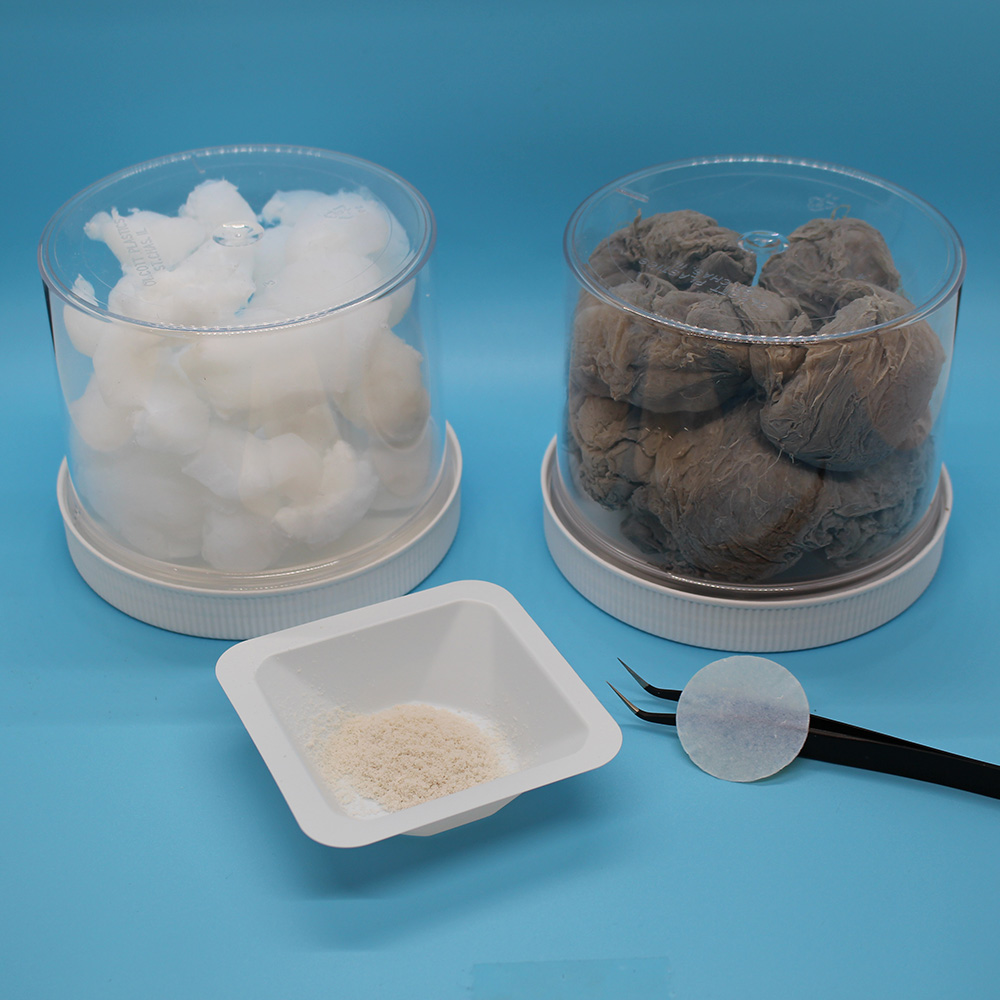Raw BNNT Materials
BNNT Materials produces the world's highest quality BNNTs. Our boron nitride nanotubes are now available in multiple as-grown and refined form factors.
Our Standard Product 10 (SP10) products contain highly-crystalline boron nitride nanotubes which are produced by the catalyst-free high temperature/high pressure (HTP) method, also known as the pressurized vapor/condenser (PVC) method. The raw, as-synthesized products contain ~40 wt.% elemental boron while the refined products (designated by -R) contain <1 wt.% elemental boron. Our BNNT products are available as puffballs, mats, powders, pellets, dispersions, and more which are all customizable to suit your needs. Uniquely, our company’s products in addition to natural boron are also available with isotopes of boron at: 10B (>96%) and 11B (>98%). Contact us with your specific needs.

| BN content | >99% (refined materials) |
| Residual Impurities | Refined materials contain <1 wt.% elemental boron |
| Tap Density | Low, ~0.25 mg/cm3 |
| Defect density | Extremely low (BNNTs flex and recover when bent) |
| Band gap | 5.7 eV (direct measurement by low energy EELS) |
| Surface area | up to 400 m2/g (by multipoint BET) |
| Network | many isolated tubes, bundles up to 5 tubes (by TEM) |
| Number of walls | 1 to 5 walls are typical, 2 or 3 walls are most common (by TEM) |
| BNNT length | up to 200 μm (by SEM), longer suspected |
| Boron nitride nanotubes (BNNT) | Carbon nanotubes (CNT) | |
| Electrical | Insulating (~5.7 eV wide-bandgap semiconductor) |
Metallic or semiconducting |
| Optical | Strong UV absorbers and transparent in the visible; visible emitters | Ultraviolet, visible, and near-infrared absorbers; semiconductors are near-infrared emitters |
| Radio Frequency transparency | Yes (e.g. for 5G or radar) | No |
| Thermal stability | Stable to at least 800°C in air | Up to 480°C |
| Thermal neutron capture cross section | Boron isotope enrichment dependent (10B ~3825 barns vs. 11B ~0.0055 barns; N = 1.9 barns) | C = 0.0035 barn |
| Bond polarity | Polar (B-N) | Nonpolar (C-C) |
| Piezoelectric behavior | Yes (0.25 – 0.4 C/m2) | Yes |
| Surface morphology | Corrugated | Smooth |
| Color | White or translucent | Black |
| Toxicity | Very low, possibly no cytotoxicity | Yes |
| Theoretical thermal conductivity (vs. copper ~400 W/m∙K) |
~3,500 W/m∙K (axial) | |
| Mechanical strength (Young's modulus) |
~1.2 TPa | |
| Coefficient of thermal expansion (CTE) | -1 x 10-6 | |